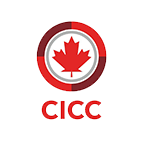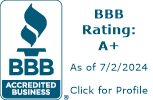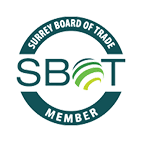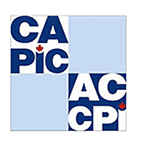Canada offers a fantastic opportunity for you and your family to build a new life. With strong job markets, excellent healthcare, and world-class education. On average, over 10,000 US immigrants become permanent residents in Canada annually. Additionally, the number of US students receiving study permits for Canadian institutions has been steadily rising, with approximately 15,000 students studying in Canada each year.
Why US Residents are Moving to Canada?
Direct PR Pathways to Immigrate to Canada from USA
Canada offers several immigration pathways for US citizens, permanent residents and temporary residents. Here are some of the most popular options:
1. Express Entry
Canada’s Express Entry system is the country’s primary immigration program for skilled workers. Many US-based skilled workers, frustrated by long Green Card wait times, consider applying for Express Entry. Additionally, residents seeking permanent relocation to Canada can obtain permanent residency through this system.
A. Federal Skilled Worker Program (FSWP)
- To be eligible for FSWP, applicants must have at least one year of continuous full-time (or equivalent part-time) work experience in a skilled occupation (TEER 0, 1, 2, or 3) within the last 10 years.
- Meet minimum language proficiency requirements in English or French, with a minimum CLB level of 7.
- Score at least 67 points out of 100 on the FSWP selection grid.
- Have sufficient funds to support settlement in Canada (if applicable).
B. Federal Skilled Trades Program (FSTP)
- The FSTP is tailored for skilled tradespeople with the following requirements:
- At least two years of full-time work experience (or an equivalent amount in part-time) in a skilled trade occupation (TEER 0, 1, 2, or 3) within the last 5 years.
- Meet minimum language proficiency requirements in English or French, with a minimum CLB level of 5 for speaking and listening, and 4 for reading and writing.
- Hold either a valid job offer in their skilled trade or a Certificate of Qualification from a Canadian provincial or territorial trade regulatory body.
C. Canadian Experience Class (CEC)
- The CEC is designed for skilled workers who have gained work experience in Canada. Applicants must:
- Have at least one year of full-time (or equivalent part-time) work experience in a skilled occupation (TEER 0, 1, 2, or 3) in Canada within the last 3 years while holding a valid work permit.
- Meet minimum language proficiency requirements in English or French, with a minimum CLB level of 7 for NOC TEER 0 and 1 occupations, and CLB level 5 for TEER 2 and 3 occupations.
2. Provincial Nominee Program (PNP)
Each Canadian province and territory (except Quebec) has its own Provincial Nominee Program, allowing them to nominate individuals who wish to immigrate to their region. Some PNPs have streams specifically for US citizens or tech workers, which can be advantageous for Americans in certain professions.
3. Family Sponsorship
If you have a close family member who is a Canadian citizen or permanent resident, they can sponsor you for immigration. Many Canadians sponsor their spouses, common-law partners, conjugal partners, and children living in the US. Additionally, children settled in Canada often bring their parents over from the US.
4. Quebec Immigration Programs
Quebec manages its own immigration programs separately from the rest of Canada. The Quebec Skilled Worker Program and Quebec Experience Program are popular options for those wishing to settle in this French-speaking province.
5. Business Immigration
Canada offers several business immigration pathways for entrepreneurs and business-minded individuals:
A. Start-up Visa Program
The Start-up Visa (SUV) program grants permanent residence to immigrant entrepreneurs while helping them settle in Canada. It’s designed to attract innovative entrepreneurs who can contribute to the Canadian economy.
B. Provincial Business and Entrepreneur Programs
Many Provincial Nominee Programs (PNPs) have streams dedicated to business immigration, allowing provinces to nominate individuals based on their own criteria.
C. Self-Employed Persons Program
The Self-Employed Persons Program is designed for individuals who have relevant experience in cultural activities, athletics, or farm management and can be self-employed in Canada.
How to Immigrate to Canada from US?
The immigration process to Canada typically involves the following steps:
- Determine Your Eligibility
- Choose an Immigration Program: Based on your eligibility, select the most appropriate program for your situation.
- Gather Required Documents: Common documents include:
- Valid passport
- Language test results (IELTS for English, TEF for French)
- Educational Credential Assessment (ECA) for non-Canadian degrees
- Work Experience documents
- Police clearance certificates
- Medical exam results
- Proof of funds
- Submit Your Application: Depending on the program, you may need to create an online profile or submit a paper application.
- Wait for Processing: Processing times vary by program and can range from a few months to over a year.
- Receive a Decision: If approved, you’ll receive an Invitation to Apply (ITA) for permanent residence or a provincial nomination, depending on the program.
- Complete Biometrics and Medical Exam: These are typically required before final approval.
- Obtain Your Permanent Resident Visa: Once your application is fully approved, you’ll receive your visa and Confirmation of Permanent Residence (COPR).
- Move to Canada: You must arrive in Canada before your documents expire to officially become a permanent resident.
Processing Times and Costs
The timeline for immigrating to Canada can vary significantly depending on the program and individual circumstances. Here’s a general overview:
- Express Entry: 6-8 months from profile creation to landing in Canada (if selected quickly)
- Provincial Nominee Program: 15-19 months on average
- Family Sponsorship: 12-24 months depending on the relationship
As for costs, you should budget for:
- Application fees (e.g., $825 CAD for Express Entry, plus $225 CAD for right of permanent residence)
- Language tests ($300-$400 CAD)
- Educational Credential Assessment ($200-$300 CAD)
- Medical exam ($200-$500 CAD)
- Police certificates ($100-$200 CAD)
- Biometrics fee ($85 CAD)
- Settlement funds (varies, but often around $13,000 CAD for a single person)
Moving to Canada from the US on a Work Permit
As a US citizen, you have several options for obtaining a work permit to move to Canada. This guide will walk you through the main pathways and requirements for securing a Canadian work permit.
1. Canada-United States-Mexico Agreement (CUSMA) Work Permit
The CUSMA (formerly NAFTA) provides a streamlined process for US citizens to work in Canada in certain professions.
Key Points:
- No Labour Market Impact Assessment (LMIA) required
- Faster processing times
- Available for specific professions listed in the agreement
Eligible Professions Include:
- Engineers
- Accountants
- Lawyers
- Teachers
- Management Consultants
- Scientific Technicians/Technologists
Requirements
- US citizenship
- A job offer from a Canadian employer
- Qualifications for the specific CUSMA-listed profession
2. Intra-Company Transfer
If you work for a US company with a Canadian branch, subsidiary, or affiliate, you may be eligible for an intra-company transfer.
Key Points
- No LMIA required
- For executive, managerial, or specialized knowledge positions
- Initial duration up to 3 years, with possible extensions
Requirements
- Employed by the US company for at least one year in the past three years
- Transferring to a related Canadian company
- In an executive, managerial, or specialized knowledge role
3. Global Talent Stream
Part of the Temporary Foreign Worker Program, the Global Talent Stream is designed for high-growth companies to quickly bring in highly skilled foreign workers.
Key Points
- Expedited process (2-week work permit processing)
- Requires an LMIA, but with a streamlined process
- For specific in-demand occupations or unique and specialized roles
Requirements
- Job offer from an eligible Canadian employer
- Meet education and experience requirements for the position
- Salary must meet the prevailing wage for the occupation
4. International Experience Canada (IEC)
While not specifically for US citizens, some Americans may be eligible for the IEC program through recognized organizations.
Key Points
- Offers working holiday visas
- Limited availability and age restrictions (usually 18-35)
- Open work permits for up to 2 years
Requirements
- Eligibility through a recognized organization
- Meet age requirements
- Have sufficient funds to support yourself
5. LMIA-Based Work Permit
If you don’t qualify for any of the above options, you may still be able to obtain a work permit through the regular LMIA process.
Key Points
- Employer must prove no qualified Canadians are available for the job
- Longer processing times
- Valid for the duration of the job offer (usually up to 2 years)
Requirements
- Job offer from a Canadian employer
- Employer must obtain a positive LMIA
- Meet education and experience requirements for the job
Remember, a work permit is temporary. If you wish to stay in Canada permanently, consider applying for permanent residency through programs like Express Entry or Provincial Nominee Programs.
How to Study in Canada as a US Resident?
For Americans planning to study in Canada for more than 6 months, a study permit is required. This permit is typically valid for the duration of your educational program, plus an additional 90 days to allow for extensions or preparation to leave Canada.
- Over 15,000 U.S. citizens study in Canada each year.
- More than 1,500 institutions are authorized to admit international students.
- International students can work while studying through the Post-Graduate Work Permit.
- The PGWP allows graduates to gain valuable Canadian work experience, which can lead to permanent residence
- Canadian study permits allow students to work up to 20 hours per week during school sessions and up to 40 hours per week during breaks and holidays. In contrast, F-1 visa holders in the US may face restrictions on off-campus work during their first academic year.
- Accommodation and food costs for students are generally lower in Canada than in the US. This means you can stretch your budget further while enjoying a high-quality education.
Step 1: Choose a Designated Learning Institution (DLI)
Start by selecting a program of study at a Canadian educational institution that is designated as a DLI. Only DLIs can accept international students. Research various programs and institutions to find one that aligns with your academic and career goals.
Step 2: Obtain a Letter of Acceptance
Once you have chosen your program, apply to the DLI of your choice. If accepted, the institution will provide you with a formal letter of acceptance, which is required for your study permit application.
Step 3: Apply for a Provincial Attestation Letter (PAL)
As of January 22, 2024, most students will need to obtain a Provincial Attestation Letter (PAL) from the province or territory where you plan to study. This letter confirms that you meet the province’s requirements for international students.
Step 4: Gather Required Documents
Prepare the necessary documents for your study permit application.
Step 5: Submit Your Study Permit Application
You can apply for your study permit online through the Immigration, Refugees and Citizenship Canada (IRCC) website. Ensure that you provide all required documentation and complete the application accurately. Processing times can vary, so apply as early as possible, ideally at least three months before your intended start date.
Step 6: Wait for Approval
After submitting your application, monitor its status through your IRCC account. If approved, you will receive a Letter of Introduction and, if required, a travel visa. You will need to present these documents upon arrival in Canada to obtain your study permit.
Step 7: Arrive in Canada
When you arrive in Canada, present your Letter of Introduction and any other required documents to the border services officer. They will issue your study permit, allowing you to begin your studies.
Need Guidance from Our Licensed Consultants?
Navigating the Canadian immigration process can be complex, but you don’t have to do it alone. Our experienced team of immigration professionals can guide you through every step of your journey to Canada. We offer:
- Personalized assessments to determine your best immigration pathway
- Assistance with document preparation and application submission
- Regular updates on your application status
- Expert advice on settling in Canada
- Support with job search and credential recognition
- Guidance on cultural adaptation and integration
Let’s work together to make your Canadian visa application a success! Contact us today for a consultation and take the first step towards your new life in Canada!









